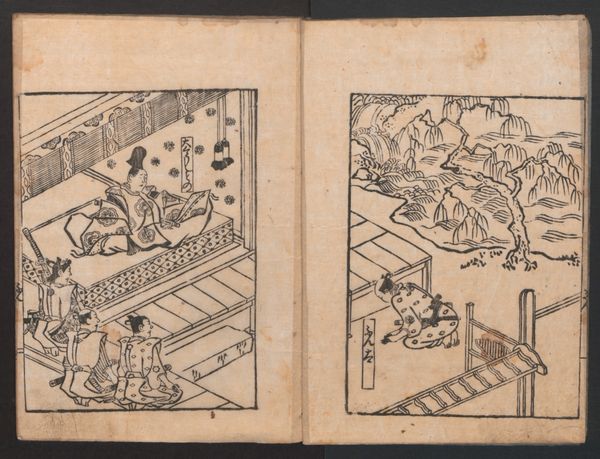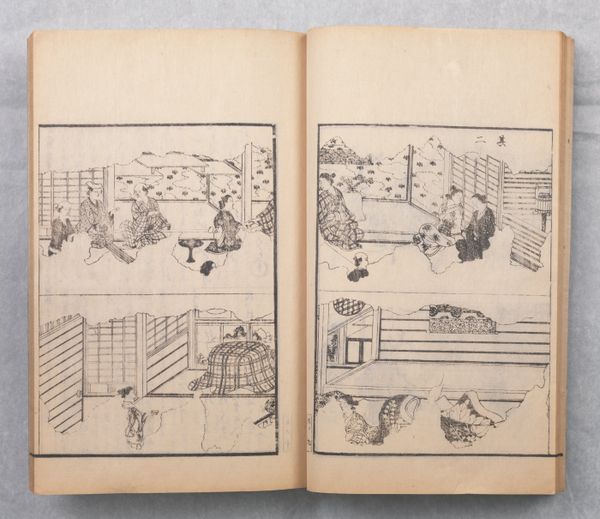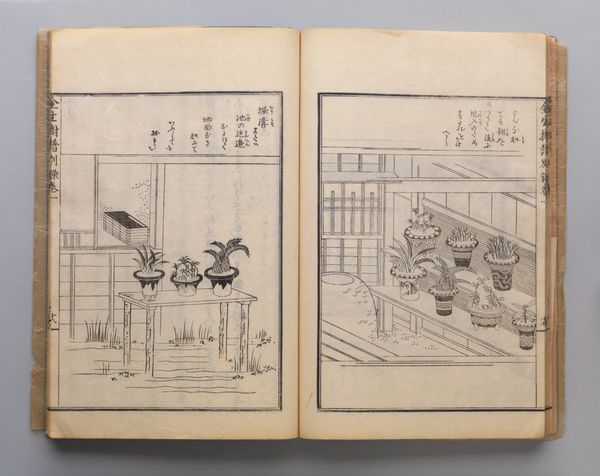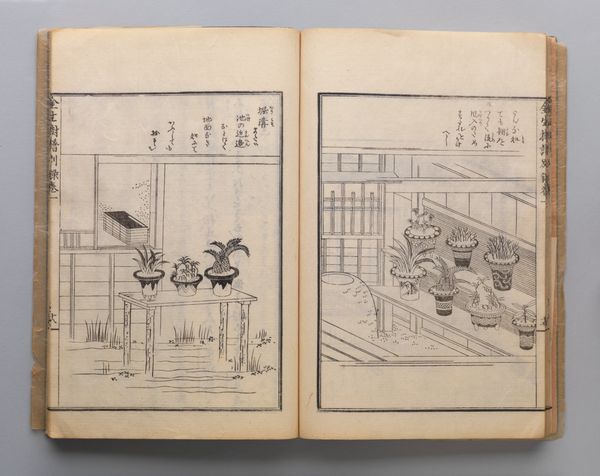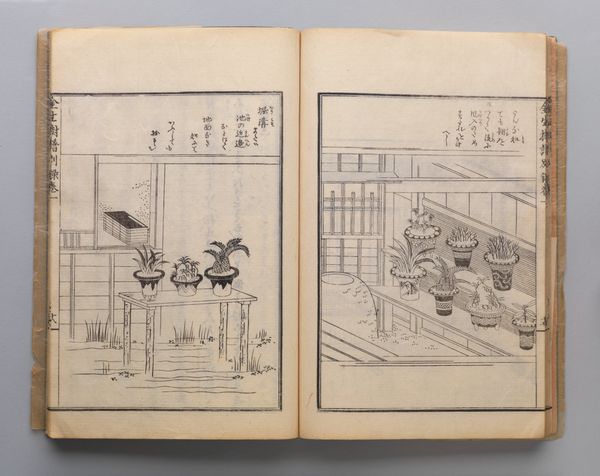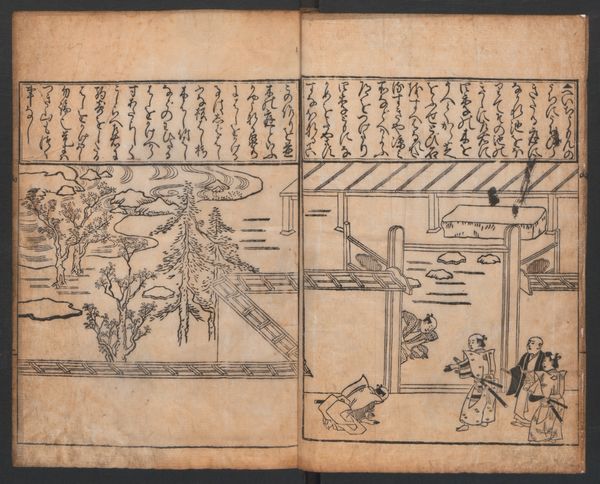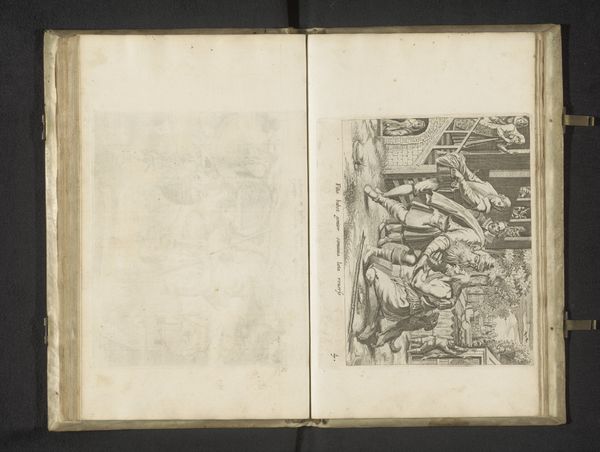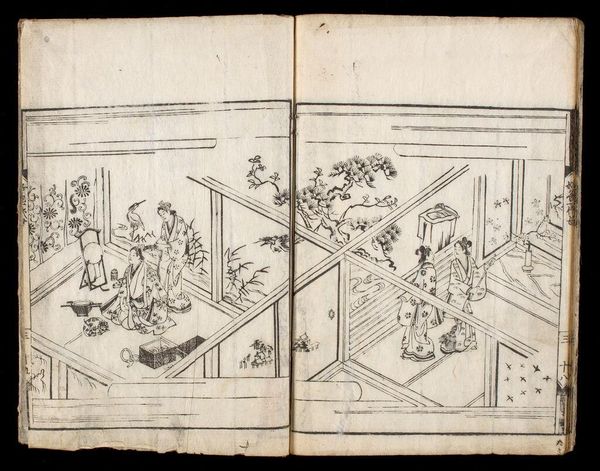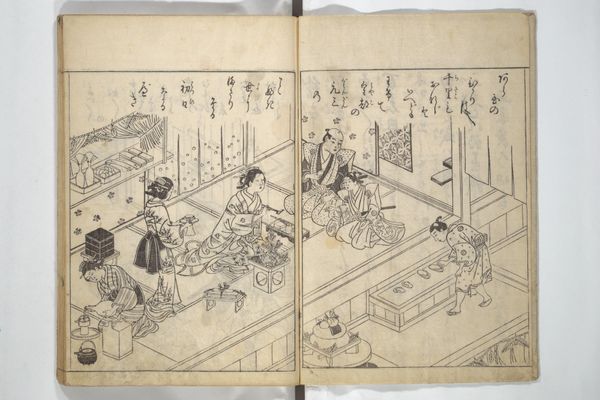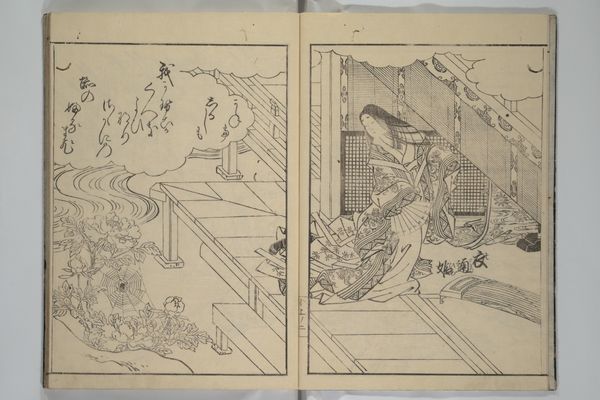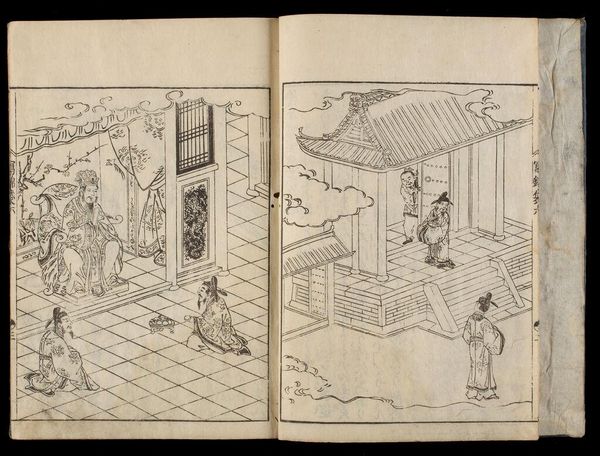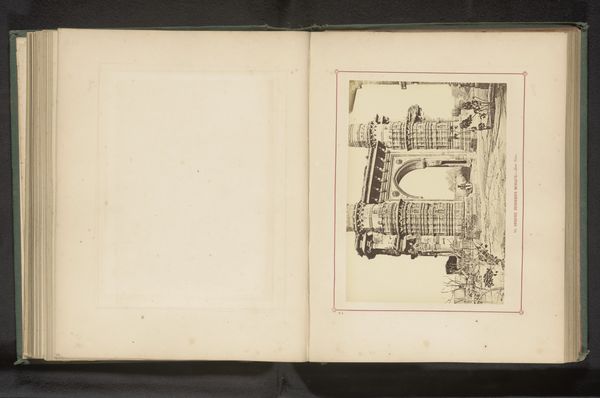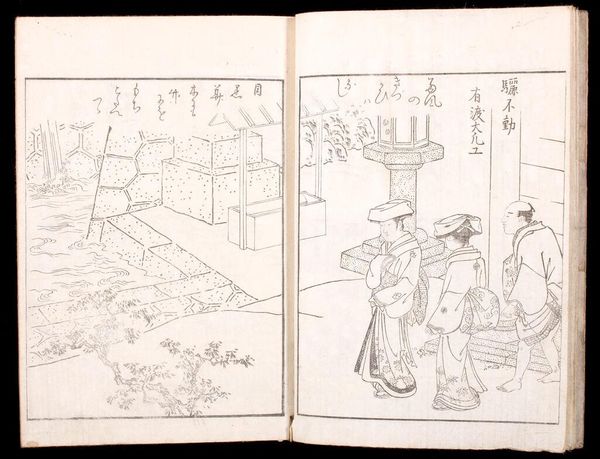
Red and White Tale of Genji (Kō haku Genji monogatari) 1709
0:00
0:00
print, paper, ink-on-paper, ink, woodblock-print
#
aged paper
#
toned paper
#
narrative-art
# print
#
book
#
asian-art
#
ukiyo-e
#
japan
#
paper
#
ink-on-paper
#
ink
#
woodblock-print
Dimensions: 10 1/2 × 7 1/8 × 3/8 in. (26.67 × 18.1 × 0.95 cm)
Copyright: Public Domain
This is an illustration by Okumura Masanobu, made in Japan in the 1700s. The print depicts scenes from the Tale of Genji, a classic work of Japanese literature. Looking at the image, we see carefully rendered interior spaces and figures in traditional dress, giving us a glimpse into the world of the Japanese imperial court. The Tale of Genji, written centuries earlier, was itself a product of a highly stratified society, where gender roles, class distinctions, and political power played significant parts in shaping individual destinies. Masanobu's work reflects the continued fascination with this narrative. How can we understand these portrayals of courtly life, viewed through the lens of gender and power dynamics? Are they simply romanticized visions of the past, or do they offer a more nuanced critique of the social structures? As you consider this image, ask yourself how it speaks to both the timeless nature of human relationships and the specific historical context in which it was created.
Comments
minneapolisinstituteofart almost 2 years ago
⋮
Murasaki Shikibu, a court lady, wrote The Tale of Genji—posited to be the world’s fi rst novel—in the early 11th century. Following courtier Hikaru Genji and his many trysts, the story offers insight into aristocratic society and life at the time. By the Edo period, when printed versions of Genji became available, few could understand the classicalJapanese language used in the original written version. In this book, writer Suigetsudō Baiō translated the original text into the vernacular, while illustrations were added to appeal to a broader readership.
Join the conversation
Join millions of artists and users on Artera today and experience the ultimate creative platform.
